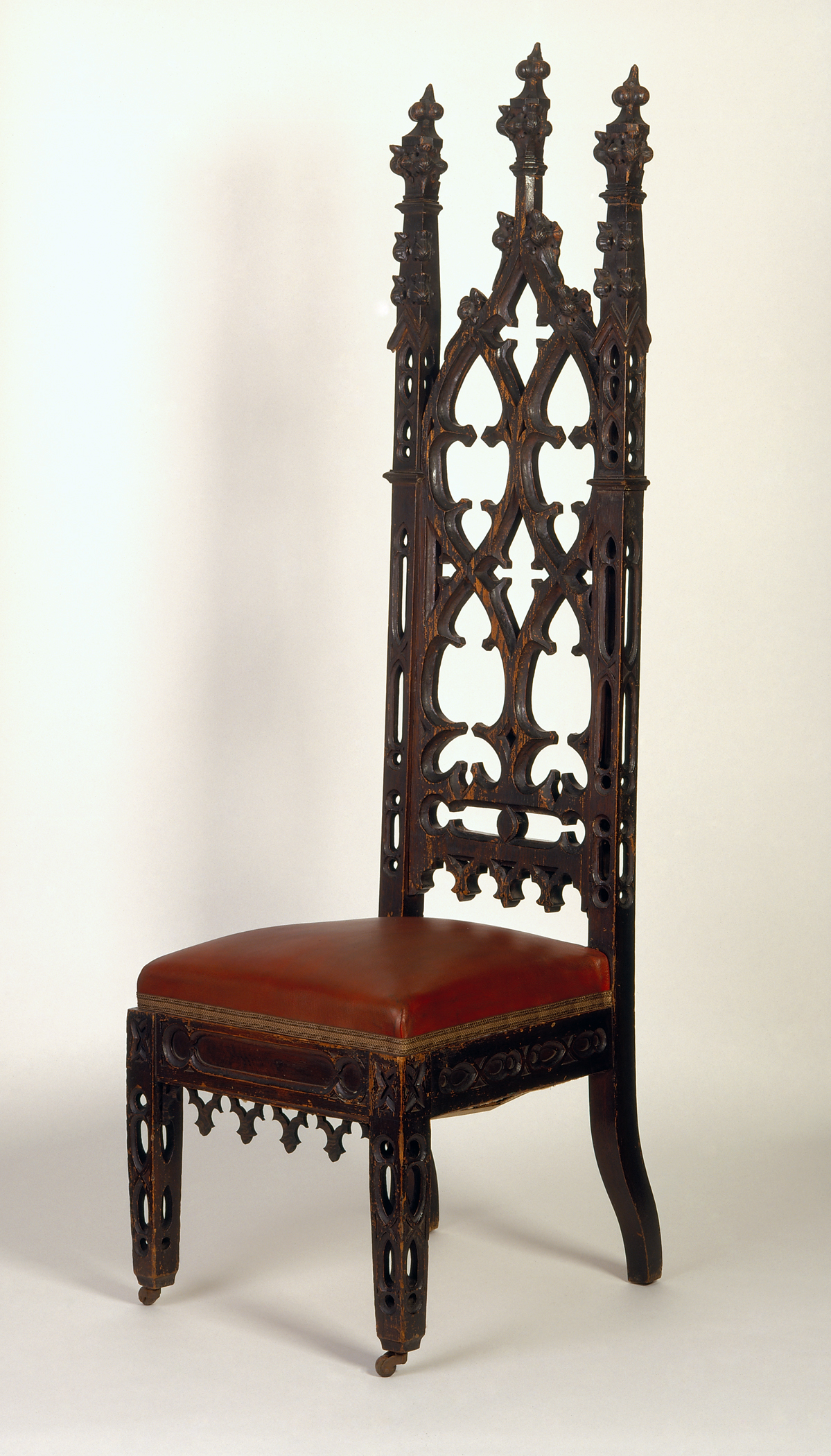Gothic Revival from Mississippi to England
I had never been to England before our January trip, but when I pictured it, the scenes that came to mind were decidedly Gothic: Westminster Abbey, Big Ben, and Hogwarts included. In looking through Winterthur’s collection of Gothic pieces, a theme caught my attention—much of the Gothic furniture had Southern provenances. Focusing on a Gothic hall chair owned in Mississippi, I was excited to explore this connection further in England. Why did the American South embrace the Gothic Revival style so enthusiastically?

Courtesy of Winterthur Museum, Hall chair, 1845-1855, Oak, Paint, Museum purchase with funds provided by the Henry Francis du Pont Collectors Circle and partial gift of Milly McGehee, 1997.35.
In the home of Edward and Lucy Butts of Vicksburg, Mississippi, this chair made an imposing impression. The play of candlelight across its dark carvings would have cast bold shadows, enhancing the visual drama. Ornate ornament made it clear that the chair had been a costly investment, especially when displayed as a set. To the modern eye, and perhaps to the Butts family’s visitors, the chair seems more at home in a European cathedral than in a Vicksburg mansion. But that was, in some ways, the point. For the Butts family, the Gothic style harkened back to a feudal English past, one which in many ways mirrored their own plantation society. When the chair was manufactured around 1850, it already carried with it a long history, connected to centuries of British design. While in England, I sought out Gothic design sources to better understand this fascinating piece.
The Original Gothic
At the Victoria and Albert Museum, I found an early sixteenth century doorway which connected the Butts family chair to its original Gothic roots. As the wood has decayed, the door’s powerful tenons are exposed, explaining its survival over an eventful half-millennium. The door within the frame is a pointed arch, the enduring shape of the Gothic that would appear again and again—across time and place—as new generations adapted the style to speak to their present.

Victoria and Albert Museum, http://collections.vam.ac.uk/item/O84679/door-and-doorway-unknown
Gothic as Moral
Next, Professor William Whyte of St. John’s College, Oxford, introduced us to dozens of stony faces peering out from Canterbury Quad. This carving, a personification of Theology, particularly caught my attention, because Theology is flanked to her left and right by Gothic churches. Here, Gothic architecture was the material embodiment of proper religious thought. This association between Gothic style and morality was enduring. Designers like A. W. Pugin who helped popularize the Gothic Revival in the 19th century promoted the style as inherently virtuous. For Pugin, Gothic Revival was always about more than aesthetics, it was about a return to a purer, more honorable Britain.

Carving of Theology, St. John’s College, Canterbury Quad. Photo by the Author.
Gothic as Nationalistic
In Bath, a visit to Beckford’s Tower shed light on another aspect of Gothic Revival—nationalism. There, curator Amy Frost introduced us to William Beckford, the astronomically wealthy eighteenth-century collector, and showed us a model of his house, Fonthill Abbey. This one-of-a-kind mansion displayed the majesty of the Gothic Revival on a monumental scale. Beckford chose the Gothic style to connect himself with Britain’s noble, medieval past, heightening his own image of power and legitimacy. Before Gothic Revival was about morality, it was about pride in Britain’s beginnings.

View of the west and north fronts of Fonthill Abbey, from John Rutter’s Delineations of Fonthill and Its Abbey, 1823.
Gothic Revival in Antebellum Vicksburg
Gothic Revival found a home in the elite plantation culture of the antebellum South, which embraced the style with particular enthusiasm. The same meanings that drew the English to Gothic Revival—pride in heritage, embrace of tradition in times of change, and promotion of hierarchies—resonated with elite plantation owners. Like William Beckford before them, the Butts used the Gothic style—intended originally to inspire awe of God—to inspire awe of man. Throughout the trip, I was overwhelmed by the continuing presence of the Gothic style on the English landscape, and I remain fascinated by how and why its influence took root closer to home.
By Candice Roland Candeto, WPAMC Class of 2018

Leave a Reply